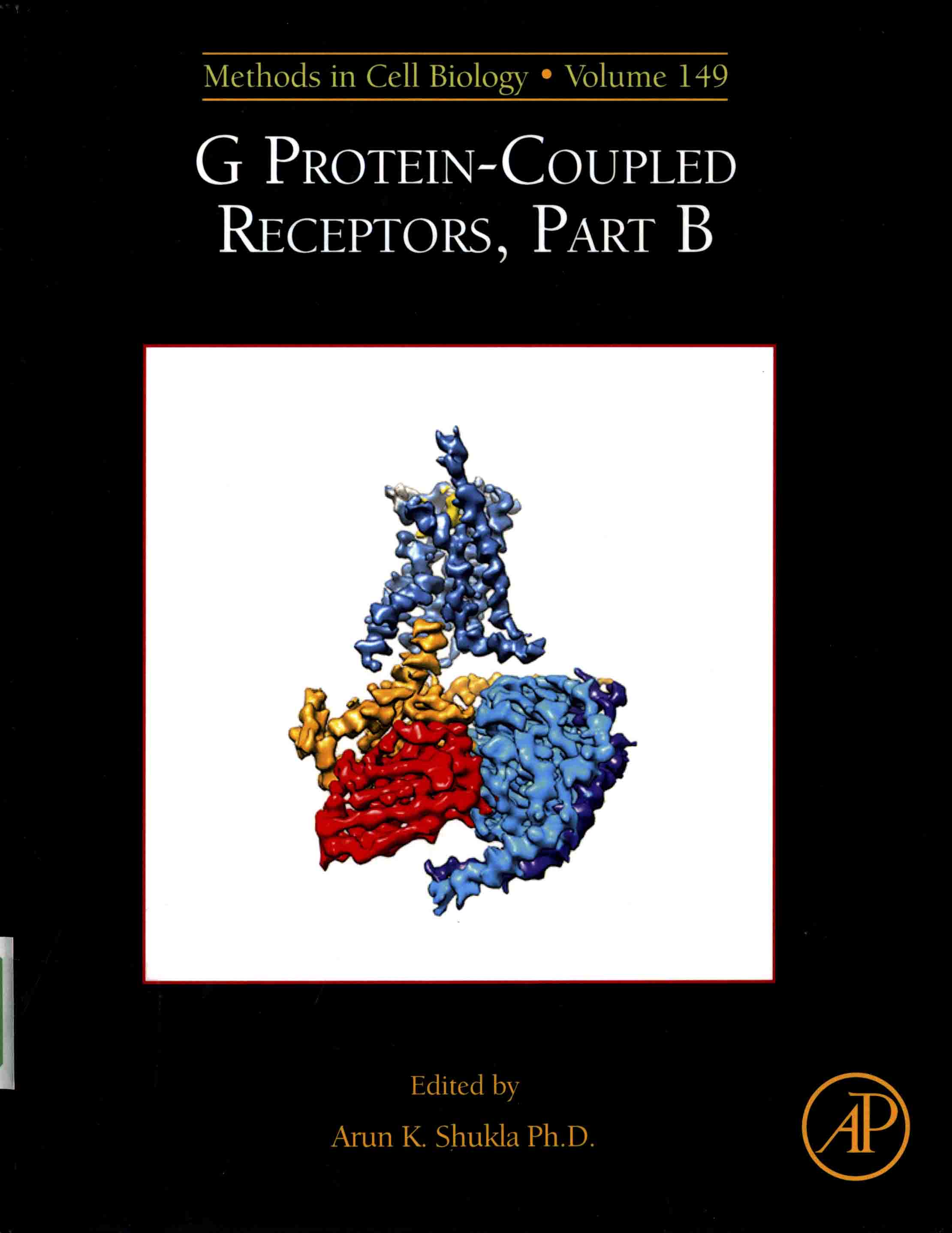 |
G protein-coupled receptors. Part B / edited by Arun K. Shukla. -- Cambridge, MA : Academic Press, 2019. – (58.1574/M592/v.149) |
Contents
Contributors
Preface
CHAPTER 1 Optical approaches for
visualization of arrestin binding to muscarinic receptor
1. Background arid Question
2. Methods
3. Sample Results
4. Concluding Remarks
Acknowledgments
References
CHAPTER 2 Luciferase reporter assay for
unlocking ligand-mediated signaling of GPCRs
1. Introduction
2. Materials
3. Methods
4. Notes
Acknowledgments
References
CHAPTER 3 Genetic manipulation of PLB-985
cells and quantification of chemotaxis using the underagarose assay
1. Introduction
2. Generation of Genetically
Altered PLB-985 Cells
3. Differentiation of PLB-985
Cells Using Dimethyl Sulfoxide (DMSO)
4. Set-up of an Underagarose
Chemotaxis Assay
5. Analysis of Cell Movement in
Chemotactic Gradients
6. Troubleshooting
References
CHAPTER 4 A high-throughput assay pipeline
for specific targeting of frizzled GPCRs in cancer
1. Introduction
2. Materials
3, Methods
References
CHAPTER 5 Non-radioactive binding assay for
bradykinin and angiotensin receptors
1. Introduction
2, Material
3, Methods
Acknowledgments
References
CHAPTER 6 Detection of misfolded rhodopsin
aggregates in cells by Forster resonance energy transfer
1. Introduction
2. Materials
3. Methods
Acknowledgments
References
CHAPTER 7 Analysis of ubiquitination and
ligand-dependent trafficking of group I mGluRs
1. Introduction
2. Materials
3. Methods
References
CHAPTER 8 Measuring surface expression and
endocytosis of GPCRs using whole-cell ELISA
1. Introduction
2. Materials
3. Methods
4.
Expected Results
5. Troubleshooting
6. Additional Notes
Acknowledgments
References
CHAPTER 9 Measuring agonist-induced ERR MAP
kinase phosphorylation for G-protein-coupled receptors
1. Introduction
2. Materials
3.
Methods
4. Troubleshooting Steps
5. Expected Result
6. Additional Notes
Acknowledgment
References
CHAPTER 10 Understanding GPCR dimerization
1. Introduction
2. Methods for Demonstrating of
GPCR Dimerization
3. Protocols
Acknowledgments
References
CHAPTER 11 Label-free impedance-based whole
cell assay to study GPCR pharmacology
1. Introduction
2. Materials
3. Methods
4. Results
5. Conclusions
References
Further Reading
CHAPTER 12 The role of β-arrestins in G
protein-coupled receptor heterologous desensitization: A brief story
1. Introduction
2. The Formation of GPCR/β-Arrestin Complexes During
the Homologous and Heterologous Desensitization Processes
3. The Role of β-Arrestins in Heterologous
Desensitization: Describing a Few Number of Studies
4. Coda/Future Directions
Acknowledgments
Author Contributions
Conflicts of Interest
References
Further Reading
CHAPTER 13 Co-IP assays for measuring
GPCR-arrestin interactions
1. Introduction
2. Materials
3. Methods
4. Notes
References
CHAPTER 14 Effect of novel GPCR ligands on
blood pressure and vascular homeostasis
1. Introduction
2. Angiotensin Type 1 Receptor
and Blood Pressure
3. Angiotensin Type 1 Receptor
Ligands vs Blood Pressure
4. Summary and Future
Perspectives
Acknowledgments
References
CHAPTER 15 Assessing real-time signaling and
agonist-induced CRHR1 internalization by optical methods
1. Introduction
2. Real Time Measurement of the
CRHR1 cAMP and Calcium Response
3. Fluorescent Flow Cytometry to
Study CRHR1 Internalization.
4. Materials
5. Procedures
6. Conclusions and Future
Perspectives
Acknowledgments
References
CHAPTER 16 Solution NMR spectroscopy of
GPCRs: Residue-specific labeling strategies with a focus on 13C-methyl
methionine labeling of the atypical chemokine receptor ACKR3
1. Introduction
2. Methods
3. Summary and Conclusions
Acknowledgments
References
CHAPTER 17 Modeling the complete
chemokine-receptor interaction
1. Introduction
2. Materials
3. Methods
4. Data Analysis and
Interpretation
5. Selection of a Final Model or
Ensemble
6. Concluding Remarks
Acknowledgments
Conflict of Interest
References